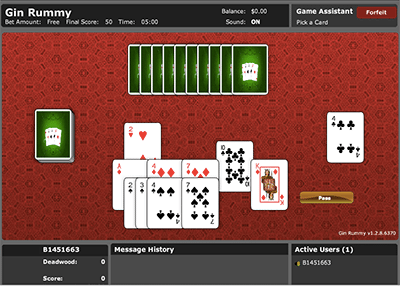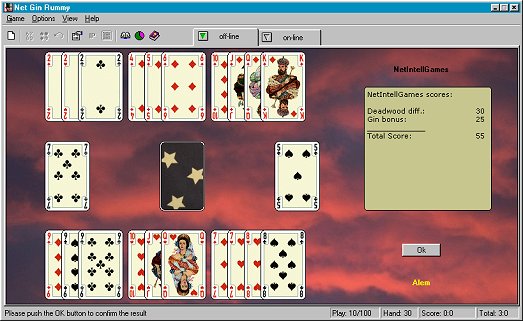Gin Rummy Rules And Scoring
See full list on wikihow.com. If you go Gin, you score 25 points, plus the sum of whatever your opponent fails to make into complete combinations — her unconnected cards, or deadwood. You must pick up a card, either from the stock or the discard pile, before you go Gin. To better understand how to score points after you win, take a look at the cards in this figure. In Grand Gin Rummy, a green knock button will appear. The scores are tallied with each player’s hand face-up on the table. Add up your points of deadwood and subtract it from your opponent’s deadwood. Whatever number you get is your score for that round. Gin Bonus – If the knocker goes Gin, he scores the entire deadwood count of the defender and a Gin bonus of 25 points (20 points according to some rules). The defender doesn’t get to lay off. Big Gin – When a player draws the 11th card, and can form a gin with all 11 cards, he can retain the extra card as part of his hand. The official rules for Gin Rummy. A beginners guide to the popular game of gin.
Get acquainted with the basics and see what makes this gin rummy card game so fun!
Welcome to the Grand Gin Rummy Hotel! I’m Robert, the bellboy here at the hotel, and I’m here to explain how you play Grand Gin Rummy. If you’d rather watch the game rules in action, we have a really great tutorial in the game. You can download it for free in the Apple and Google Play app stores.
Let’s start with the basics. Aces always equal 1 and face cards (jacks, queens, and kings) always equal 10 points. All other cards equal the number on the card: 2s are two points, 3s are three points, and so on.
The object of the game is to form groups of cards called “melds”.
They can either form sets of the same number or sequences of consecutive numbers in the same suit.
SET:
SEQUENCE:
Each player is dealt 10 cards at the start of a game. Any cards in your hand that are unmatched (not in melds) are called deadwood. You want to have as little deadwood as possible.
The remaining cards in the deck are placed face-down and become the stock pile.
One card is then placed face-up to form the discard pile.

On the first turn, a player can either pick up the face-up card or pass. If the player passes, the dealer can pick it up or pass as well. If the dealer passes, the player can draw from the stock pile. For the remaining turns, you can draw from either the stock pile or the discard pile and at the end of each turn, you must discard one card.

Official Gin Rummy Rules
Once you have 10 points or less of deadwood, you can knock to end the round. In Grand Gin Rummy, a green knock button will appear.

Gin Rummy Rules And Scoring
The scores are tallied with each player’s hand face-up on the table. Add up your points of deadwood and subtract it from your opponent’s deadwood. Whatever number you get is your score for that round. So, if you have 8 points of deadwood and your opponent has 26 points of deadwood, your score is 26-8=18. You get 18 points!
However, your opponent can lay off cards that match with your melds. For example, if you have a meld of three jacks and your opponent has one jack as deadwood, your opponent can lay off that jack onto your meld and reduce their deadwood count by 10 points. Instead of 18, now you only get 8 points.
If you have more points of deadwood than your opponent after you knock, you get undercut and your opponent gets the points plus 25 bonus points! In Grand Gin Rummy, you also get 15 bonus points just for winning a hand. This makes the game move a little quicker.
If you match 10 out of 11 cards after the draw phase, you've achieved gin and you will receive 25 bonus points.
If all 11 cards form melds prior to knocking, you've achieved big gin. For this, you are awarded 50 bonus points.
If no one knocks or goes gin by the time there are only two cards left in the stock pile, then the hand ends in a tie, and the dealer re-deals.The first player to reach 100 points wins the game.

Now that you know the basics, maybe you want to learn some more advanced tactics! Check out our introduction to offensive combinations.
Back to overview